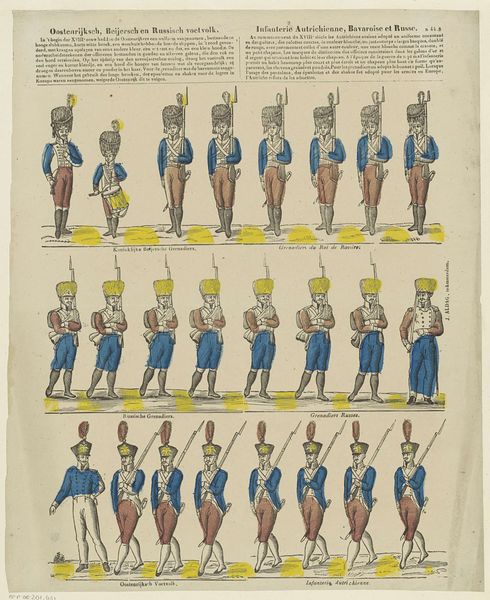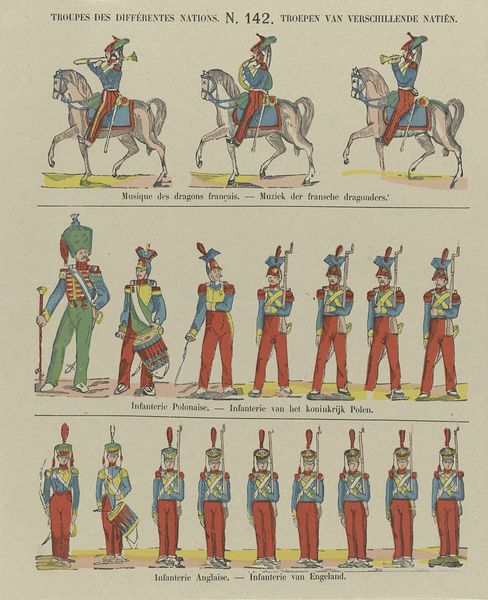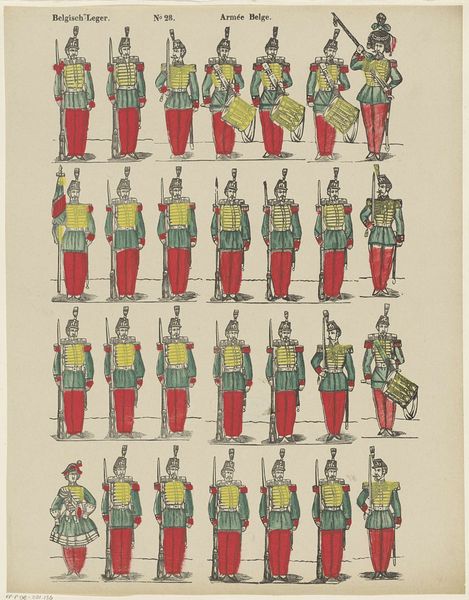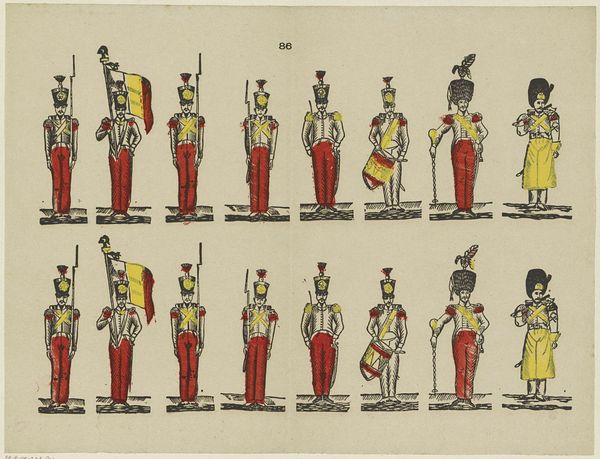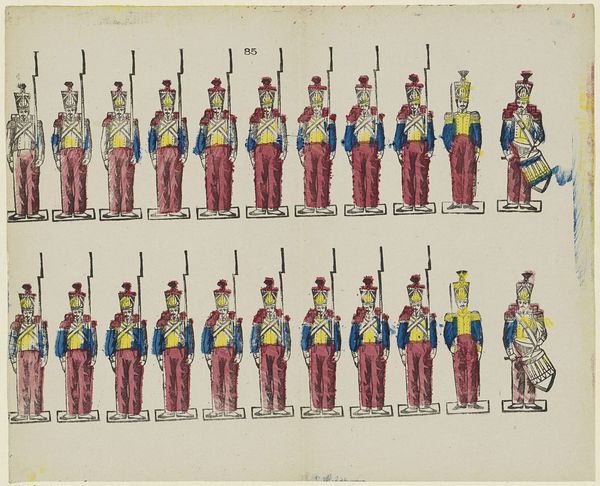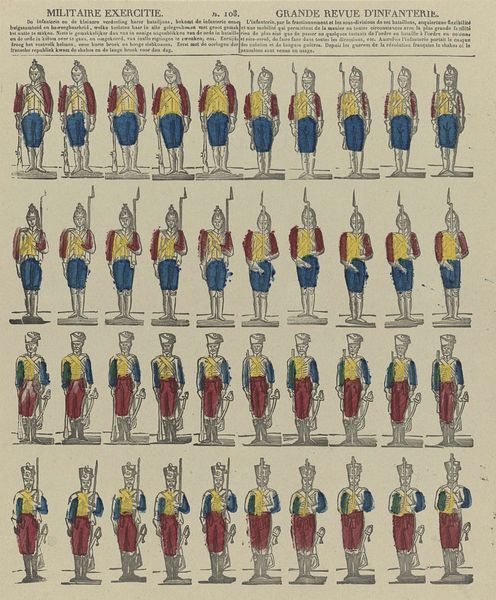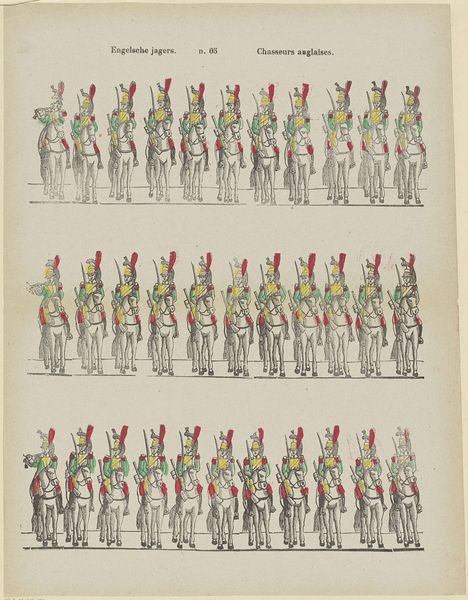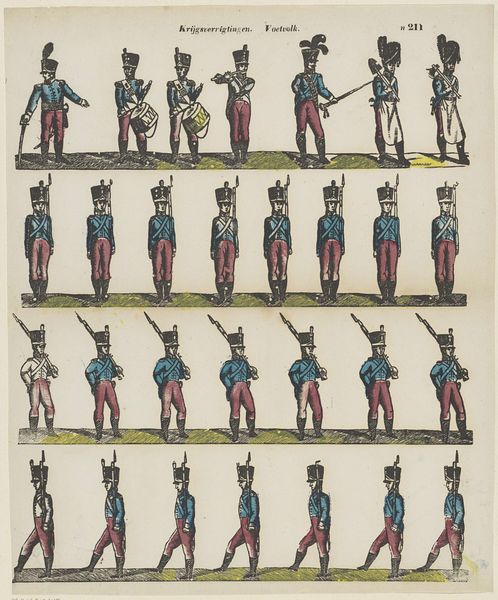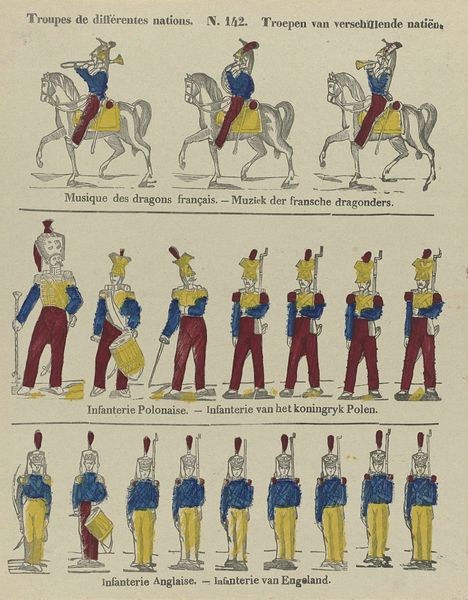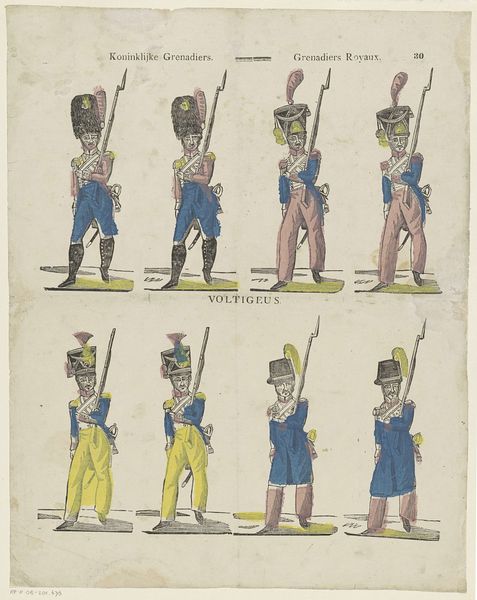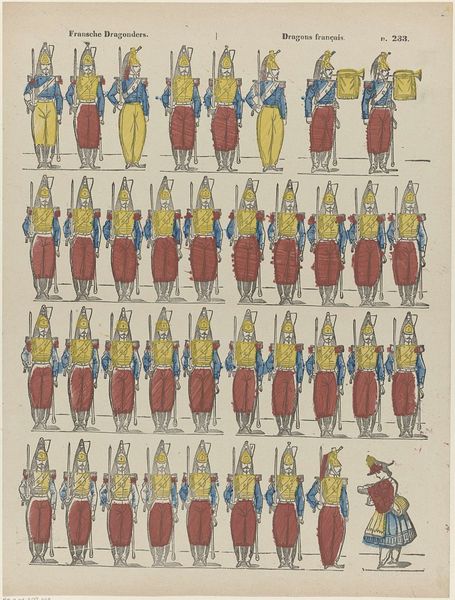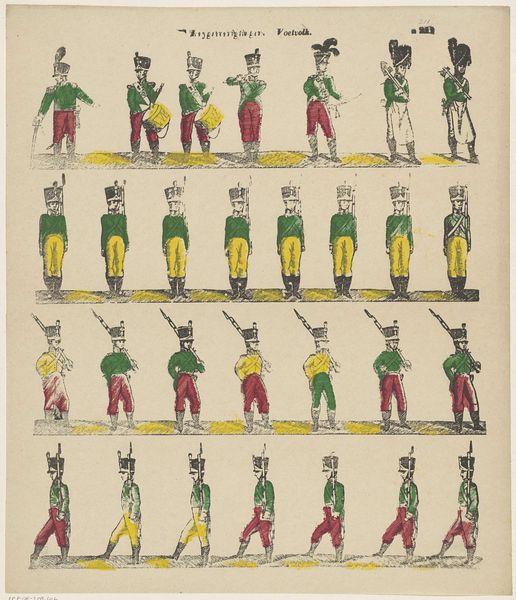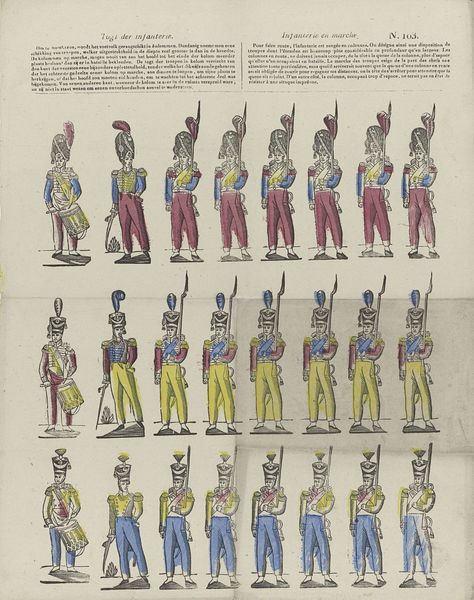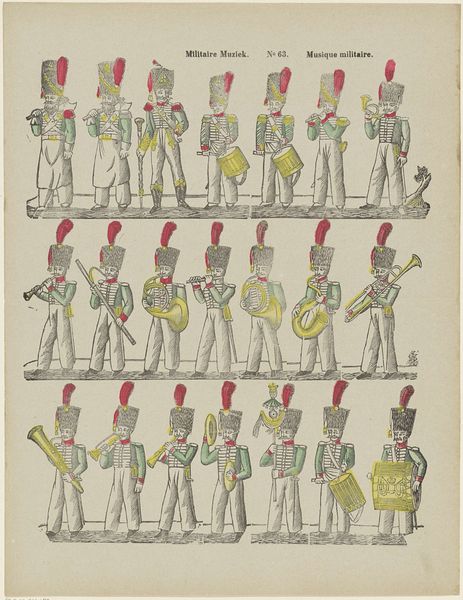
Oostenrijksch, Beijersch, en Russisch voetvolk / Infanterie Autrichienne, Bavaroise et Russe 1800 - 1833
0:00
0:00
drawing, lithograph, print
#
drawing
#
neoclacissism
#
lithograph
# print
#
figuration
#
genre-painting
#
history-painting
#
realism
Dimensions: height 382 mm, width 313 mm
Copyright: Rijks Museum: Open Domain
Curator: This print, titled "Oostenrijksch, Beijersch, en Russisch voetvolk / Infanterie Autrichienne, Bavaroise et Russe", offers a fascinating glimpse into early 19th-century military life. Created between 1800 and 1833 by Philippus Jacobus Brepols, it employs lithography and drawing. What is your immediate reaction to it? Editor: A parade ground! I am struck by the almost clinical precision with which these figures are rendered. The neat rows, the regimented color palette... it's all very controlled and ordered. Curator: Indeed. Brepols gives us a detailed inventory of military uniforms. Beyond aesthetic choices, these are the garments of labour and markers of national identity. How might the process of uniform production reflect social dynamics? Consider the textiles, their origin, the labor conditions involved... Editor: I am seeing echoes of neoclassicism in its reliance on line and idealized forms, even if the style veers towards realism. The composition certainly points towards a deeper narrative, a sort of visual semiotics of power through dress. The contrasting colors denote ranks, divisions...a symbolic hierarchy displayed visually. Curator: Absolutely. The print, accessible due to its medium, likely served as a tool for disseminating information, shaping public perception of military strength. Consider the implications of portraying soldiers in this manner - symbols of order, ripe for consumption both literal and symbolic. Editor: Yet, I keep returning to this tension between idealization and reality. While there is certainly an intention towards precision, perhaps even documentation, one cannot ignore the careful construction, the stylistic choices. Are we seeing reality reflected, or is this a curated reality designed for specific consumption? Curator: A crucial point. Examining the means of production – the lithographic process, its potential for mass production – can lead us to understand its role in creating this visual narrative of militarism, national pride, or perhaps even imperial ambition. This isn’t just about aesthetics; it is also a study in labour and industrialization. Editor: Precisely. Perhaps we both find ourselves in agreement then, understanding that through analyzing Brepol's strategic compositional and color choices, one can reveal larger meaning and power structure reflected in material culture. Curator: It offers, finally, avenues through which we perceive a deeper socio-political framework that informed this era.
Comments
No comments
Be the first to comment and join the conversation on the ultimate creative platform.
